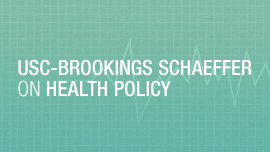Health reform (aka Obamacare) is entering a new stage. The recent announcement by United Health Care that it will stop selling insurance to individuals and families through most health insurance exchanges marks the transition. In the next stage, federal and state policy makers must decide how to use broad regulatory powers they have under the Affordable Care Act (ACA) to stabilize, expand, and diversify risk pools, improve local market competition, encourage insurers to compete on product quality rather than premium alone, and promote effective risk management. In addition, insurance companies must master rate setting, plan design, and network management and effectively manage the health risk of their enrollees in order to stay profitable, and consumers must learn how to choose and use the best plan for their circumstances.
Six months ago, United Health Care (UHC) announced that it was thinking about pulling out of the ACA exchanges. Now, they are pulling out of all but a “handful” of marketplaces. UHC is the largest private vendor of health insurance in the nation. Nonetheless, the impact on people who buy insurance through the ACA exchanges will be modest, according to careful analyses from the Kaiser Family Foundation and the Urban Institute. The effect is modest for three reasons. One is that in some states UHC focuses on group insurance, not on insurance sold to individuals, where they are not always a major presence. Secondly, premiums of UHC products in individual markets are relatively high. Third, in most states and counties ACA purchasers will still have a choice of two or more other options. In addition, UHC’s departure may coincide with or actually cause the entry of other insurers, as seems to be happening in Iowa.
The announcement by UHC is noteworthy, however. It signals the beginning for ACA exchanges of a new stage in their development, with challenges and opportunities different from and in many ways more important than those they faced during the first three years of operation, when the challenge was just to get up and running. From the time when HealthCare.Gov and the various state exchanges opened their doors until now, administrators grappled non-stop with administrative challenges—how to enroll people, helping them make an informed choice among insurance offerings, computing the right amount of assistance each individual or family should receive, modifying plans when income or family circumstances change, and performing various ‘back office’ tasks such as transferring data to and from insurance companies. The chaotic first weeks after the exchanges opened on October 1, 2013 have been well documented, not least by critics of the ACA. Less well known are the countless behind-the-scenes crises, patches, and work-arounds that harried exchange administrators used for years afterwards to keep the exchanges open and functioning.
The ACA forced not just exchange administrators but also insurers to cope with a new system and with new enrollees. Many new exchange customers were uninsured prior to signing up for marketplace coverage. Insurers had little or no information on what their use of health care would be. That meant that insurers could not be sure where to set premiums or how aggressively to try to control costs, for example by limiting networks of physicians and hospitals enrollees could use. Some did the job well or got lucky. Some didn’t. United seems to have fallen in the second category. United could have stayed in the 30 or so state markets they are leaving and tried to figure out ways to compete more effectively, but since their marketplace premiums were often not competitive and most of their business was with large groups, management decided to focus on that highly profitable segment of the insurance market. Some insurers, are seeking sizeable premium increases for insurance year 2017, in part because of unexpectedly high usage of health care by new exchange enrollees.
United is not alone in having a rough time in the exchanges. So did most of the cooperative plans that were set up under the ACA. Of the 23 cooperative plans that were established, more than half have gone out of business and more may follow.
These developments do not signal the end of the ACA or even indicate a crisis. They do mark the end of an initial period when exchanges were learning how best to cope with clerical challenges posed by a quite complicated law and when insurance companies were breaking into new markets. In the next phase of ACA implementation, federal and state policy makers will face different challenges: how to stabilize, expand, and diversify marketplace risk pools, promote local market competition, and encourage insurers to compete on product quality rather than premium alone. Insurance company executives will have to figure out how to master rate setting, plan design, and network management and manage risk for customers with different characteristics than those to which they have become accustomed.
Achieving these goals will require state and federal authorities to go beyond the core implementation decisions that have absorbed most of their attention to date and exercise powers the ACA gives them. For example, section 1332 of the ACA authorizes states to apply for waivers starting in 2017 under which they can seek to achieve the goals of the 2010 law in ways different from those specified in the original legislation. Along quite different lines, efforts are already underway in many state-based marketplaces, such as the District of Columbia, to expand and diversify the individual market risk pool by expanding marketing efforts to enroll new consumers, especially young adults. Minnesota’s Health Care Task Force recently recommended options to stabilize marketplace premiums, including reinsurance, maximum limits on the excess capital reserves or surpluses of health plans, and the merger of individual and small group markets, as Massachusetts and Vermont have done.
In normal markets, prices must cover costs, and while some companies prosper, some do not. In that respect, ACA markets are quite normal. Some regional and national insurers, along with a number of new entrants, have experienced losses in their marketplace business in 2016. One reason seems to be that insurers priced their plans aggressively in 2014 and 2015 to gain customers and then held steady in 2016. Now, many are proposing significant premium hikes for 2017.
Others, like United, are withdrawing from some states. ACA exchange administrators and state insurance officials must now take steps to encourage continued or new insurer participation, including by new entrants such as Medicaid managed care organizations (MCOs). For example, in New Mexico, where in 2016 Blue Cross Blue Shield withdrew from the state exchange, state officials now need to work with that insurer to ensure a smooth transition as it re-enters the New Mexico marketplace and to encourage other insurers to join it. In addition, state insurance regulators can use their rate review authority to benefit enrollees by promoting fair and competitive pricing among marketplace insurers. During the rate review process, which sometimes evolves into a bargaining process, insurance regulators often have the ability to put downward pressure on rates, although they must be careful to avoid the risk of underpricing of marketplace plans which could compromise the financial viability of insurers and cause them to withdraw from the market. Exchanges have an important role in the affordability of marketplace plans too. For example ACA marketplace officials in the District of Columbia and Connecticut work closely with state regulators during the rate review process in an effort to keep rates affordable and adequate to assure insurers a fair rate of return.
Several studies now indicate that in selecting among health insurance plans people tend to give disproportionate weight to premium price, and insufficient attention to other cost provisions—deductibles and cost sharing—and to quality of service and care. A core objective of the ACA is to encourage insurance customers to evaluate plans comprehensively. This objective will be hard to achieve, as health insurance is perhaps the most complicated product most people buy. But it will be next to impossible unless customers have tools that help them take account of the cost implications of all plan features and report accurately and understandably on plan quality and service. HealthCare.gov and state-based marketplaces, to varying degrees, are already offering consumers access to a number of decision support tools, such as total cost calculators, integrated provider directories, and formulary look-ups, along with tools that indicate provider network size. These should be refined over time. In addition, efforts are now underway at the federal and state level to provide more data to consumers so that they can make quality-driven plan choices. In 2018, the marketplaces will be required to display federally developed quality ratings and enrollee satisfaction information. The District of Columbia is examining the possibility of adding additional measures. California has proposed that starting in 2018 plans may only contract with providers and hospitals that have met state-specified metrics of quality care and promote safety of enrollees at a reasonable price. Such efforts will proliferate, even if not all succeed.
Beyond regulatory efforts noted above, insurance companies themselves have a critical role to play in contributing to the continued success of the ACA. As insurers come to understand the risk profiles of marketplace enrollees, they will be better able to set rates, design plans, and manage networks and thereby stay profitable. In addition, insurers are best positioned to maintain the stability of their individual market risk pools by developing and financing marketing plans to increase the volume and diversity of their exchange enrollments. It is important, in addition, that insurers, such as UHC, stop creaming off good risks from the ACA marketplaces by marketing limited coverage insurance products, such as dread disease policies and short term plans. If they do not do so voluntarily, state insurance regulators and the exchanges should join in stopping them from doing so.
Most of the attention paid to the ACA to date has focused on efforts to extend health coverage to the previously uninsured and to the administrative stumbles associated with that effort. While insurance coverage will broaden further, the period of rapid growth in coverage is at an end. And while administrative challenges remain, the basics are now in place. Now, the exchanges face the hard work of promoting vigorous and sustainable competition among insurers and of providing their customers with information so that insurers compete on what matters: cost, service, and quality of health care.
Editor’s note: This piece originally appeared in Real Clear Markets. Kevin Lucia and Justin Giovannelli contributed to this article with generous support from The Commonwealth Fund.
The Brookings Institution is committed to quality, independence, and impact.
We are supported by a diverse array of funders. In line with our values and policies, each Brookings publication represents the sole views of its author(s).




Commentary
The next stage in health reform
May 26, 2016